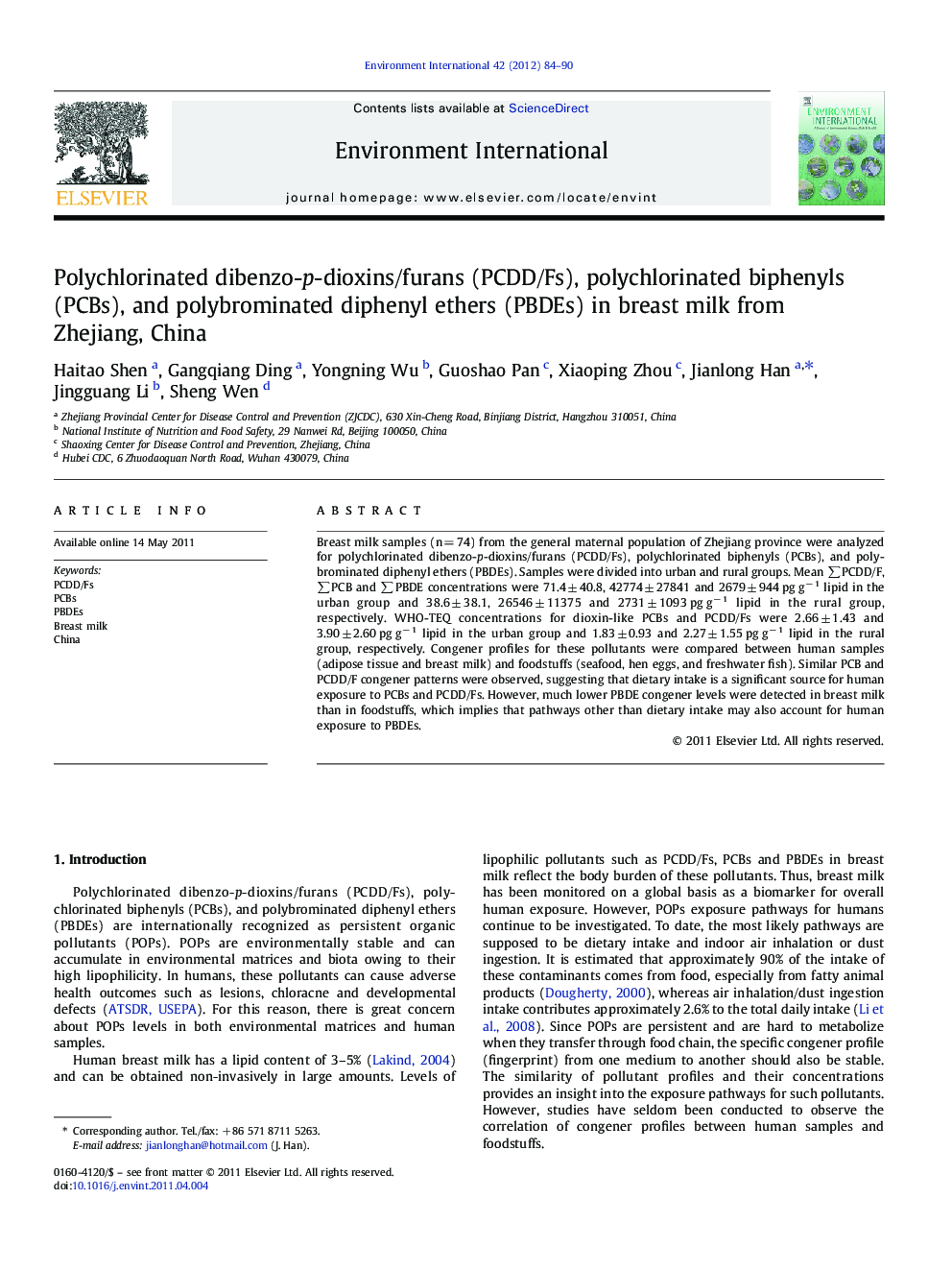| کد مقاله | کد نشریه | سال انتشار | مقاله انگلیسی | نسخه تمام متن |
|---|---|---|---|---|
| 4422970 | 1619085 | 2012 | 7 صفحه PDF | دانلود رایگان |

Breast milk samples (n = 74) from the general maternal population of Zhejiang province were analyzed for polychlorinated dibenzo-p-dioxins/furans (PCDD/Fs), polychlorinated biphenyls (PCBs), and polybrominated diphenyl ethers (PBDEs). Samples were divided into urban and rural groups. Mean ∑PCDD/F, ∑PCB and ∑PBDE concentrations were 71.4 ± 40.8, 42774 ± 27841 and 2679 ± 944 pg g− 1 lipid in the urban group and 38.6 ± 38.1, 26546 ± 11375 and 2731 ± 1093 pg g− 1 lipid in the rural group, respectively. WHO-TEQ concentrations for dioxin-like PCBs and PCDD/Fs were 2.66 ± 1.43 and 3.90 ± 2.60 pg g− 1 lipid in the urban group and 1.83 ± 0.93 and 2.27 ± 1.55 pg g− 1 lipid in the rural group, respectively. Congener profiles for these pollutants were compared between human samples (adipose tissue and breast milk) and foodstuffs (seafood, hen eggs, and freshwater fish). Similar PCB and PCDD/F congener patterns were observed, suggesting that dietary intake is a significant source for human exposure to PCBs and PCDD/Fs. However, much lower PBDE congener levels were detected in breast milk than in foodstuffs, which implies that pathways other than dietary intake may also account for human exposure to PBDEs.
Research Highlights
► We reported levels of PCDD/Fs, PCBs and PBDEs in 74 breast milk from general population in Zhejiang province, China.
► We compared finger prints of these pollutants between human samples and foodstuffs.
► Similar PCDD/F and PCB patterns were found between human samples and foodstuffs, which implies dietary intake is the main route for human exposure to POPs.
► Other passway, like inhalation, may explain the difference patterns of PBDE between human samples and foodstuffs.
Journal: Environment International - Volume 42, July 2012, Pages 84–90